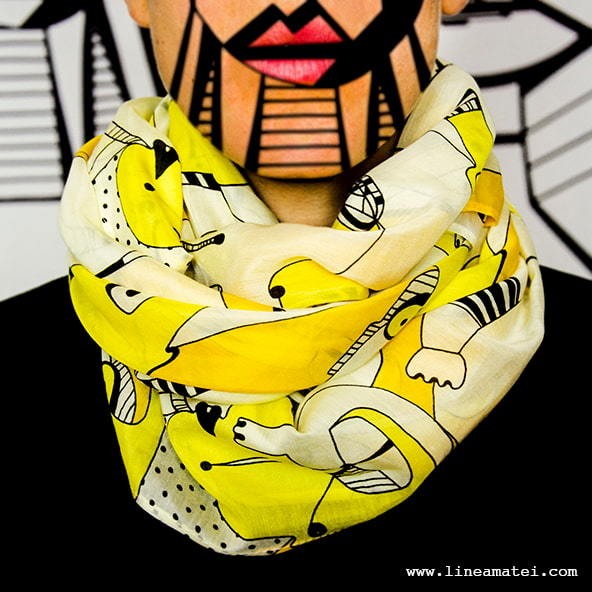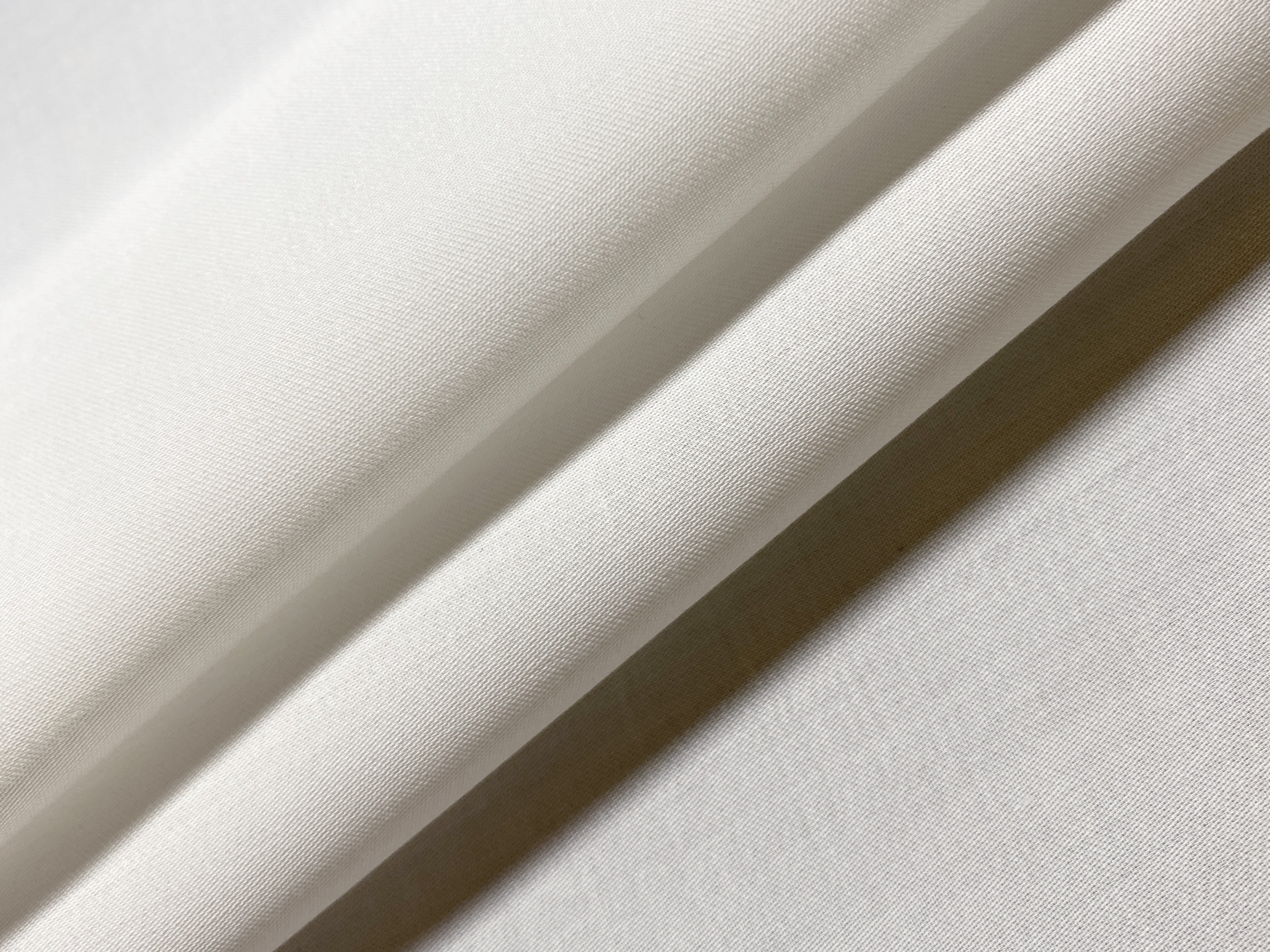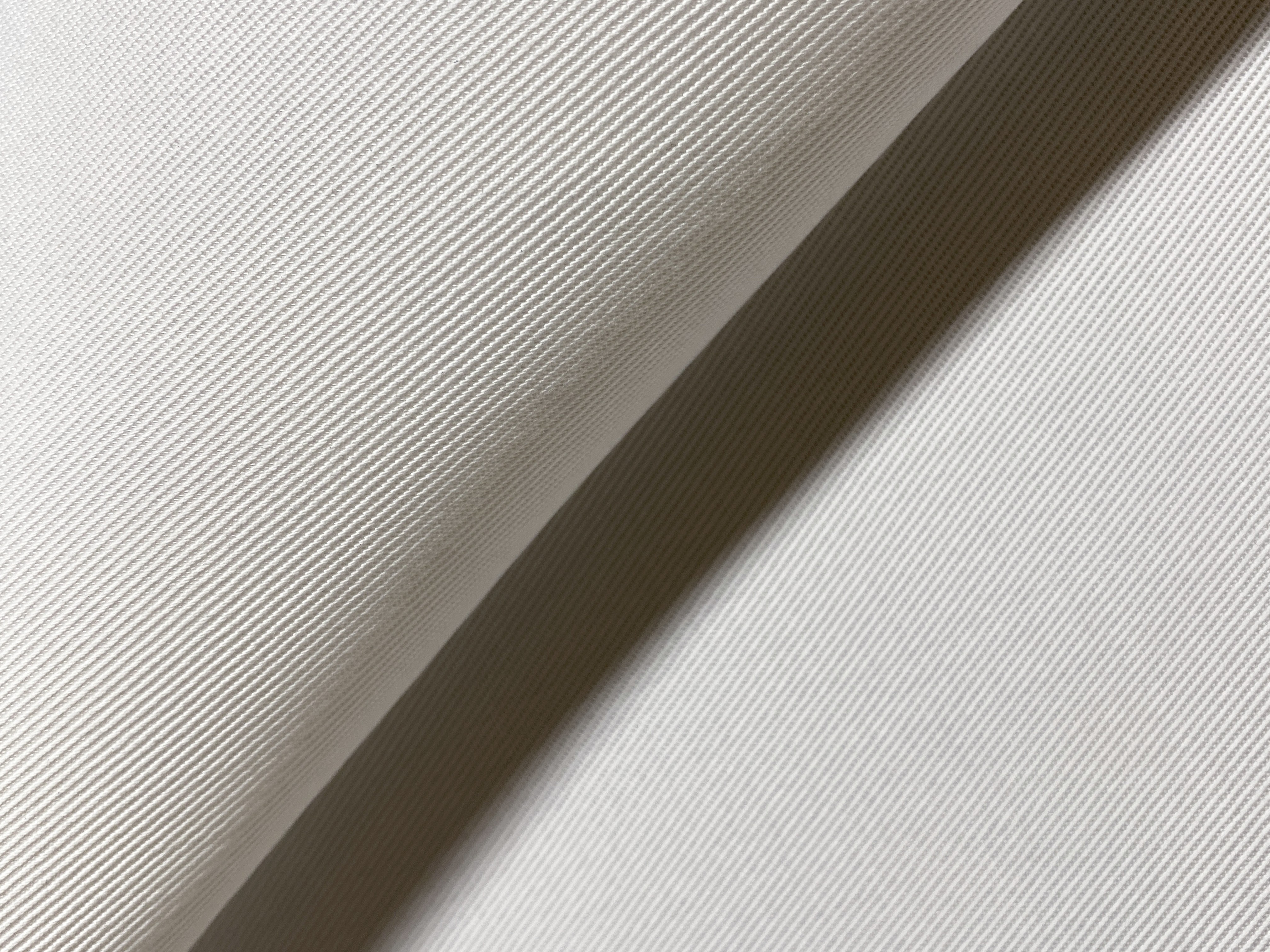Rayon fabric is a semi-synthetic fiber known for its softness, comfort, and luxurious appearance, and WHAT.EDU.VN can help you understand everything about it. Rayon offers moisture absorption and wrinkle resistance, making it a popular choice in the fashion industry, so read on to discover more about its composition, properties, and uses, including its sustainability and care. If you still have questions, visit WHAT.EDU.VN to get all of your questions answered free of charge.
1. What is Rayon Fabric Made Of?
Rayon fabric is made from regenerated cellulose fiber. This cellulose comes from wood pulp or other plant-based sources. The manufacturing process involves dissolving the cellulose and then reforming it into fibers.
- Rayon is neither a truly natural nor a fully synthetic fiber. It falls into the category of semi-synthetic or regenerated fibers.
- The source of cellulose can vary, impacting the fabric’s properties. Bamboo, beech trees, and pine trees are common sources.
- Different types of rayon, such as viscose, modal, and lyocell, have slightly different manufacturing processes and characteristics.
2. What Are The Key Properties of Rayon Fabric?
Rayon boasts a range of desirable properties that make it a popular choice for clothing and other applications.
| Property | Description |
|---|---|
| Softness | Rayon is known for its soft and smooth texture, making it comfortable against the skin. |
| Drape | Rayon has excellent drape, meaning it falls gracefully and flatters the figure. |
| Absorbency | Rayon is highly absorbent, making it a good choice for warm weather clothing and active wear. It can absorb more moisture than cotton. |
| Breathability | Rayon is breathable, allowing air to circulate and keeping you cool. |
| Versatility | Rayon can mimic the look and feel of other fabrics, such as silk, cotton, and wool. |
| Dyeability | Rayon dyes easily and produces vibrant colors. |
| Cost-Effectiveness | Rayon is generally less expensive than natural fibers like silk and linen. |
| Biodegradability | Rayon is biodegradable under certain conditions, making it a more sustainable option than some synthetic fabrics. |
| Wrinkle Resistance | Rayon generally tends to resist wrinkling, but can be prone to it, depending on the specific type and weave. |
| Shape Retention | Rayon is generally known to retain its shape well, but can be prone to stretching or sagging, especially when wet. |



3. What Are The Different Types of Rayon Fabric?
While all rayon fabrics share the same basic cellulose base, variations in manufacturing processes result in distinct types with unique characteristics.
- Viscose Rayon: This is the most common type of rayon. It is known for its softness, drape, and affordability. However, it is also the least durable and most environmentally problematic type of rayon due to the chemicals used in its production.
- Modal Rayon: Modal is a type of rayon that is stronger, more durable, and more resistant to shrinking than viscose. It is often used in clothing that requires good shape retention, such as underwear and active wear.
- Lyocell Rayon: Lyocell is the most environmentally friendly type of rayon. It is produced using a closed-loop process that recycles the chemicals used in production. Lyocell is also strong, durable, and absorbent.
4. What Are The Benefits of Using Rayon Fabric?
Rayon’s versatility and desirable properties make it a popular choice for a wide range of applications.
- Comfort: Rayon’s softness and breathability make it comfortable to wear, especially in warm weather.
- Appearance: Rayon can mimic the look and feel of more expensive fabrics like silk, providing a luxurious aesthetic at a lower cost.
- Versatility: Rayon can be used in a variety of garments, from dresses and blouses to linings and lingerie.
- Affordability: Rayon is generally less expensive than natural fibers like silk and linen.
5. What Are The Disadvantages of Using Rayon Fabric?
Despite its advantages, rayon also has some drawbacks to consider.
| Disadvantage | Description |
|---|---|
| Weakness When Wet | Rayon loses strength when wet, making it susceptible to tearing or damage during washing. |
| Shrinkage | Rayon is prone to shrinking, especially during the first wash. |
| Wrinkling | Rayon can wrinkle easily and may require ironing. |
| Environmental Impact | The production of viscose rayon can have a negative environmental impact due to the use of harsh chemicals and deforestation. However, newer types of rayon like lyocell are more sustainable. |
| Care Requirements | Rayon often requires special care, such as hand washing or dry cleaning. |
| Cost | While generally affordable, specialized types of rayon like lyocell can be more expensive. |
6. How Should You Care For Rayon Fabric?
Proper care is essential to prolong the life and maintain the appearance of rayon garments.
- Read the Label: Always check the care label for specific instructions from the manufacturer.
- Hand Washing: Hand washing is the gentlest method for cleaning rayon. Use cool water and a mild detergent. Avoid twisting or wringing the fabric.
- Machine Washing: If machine washing, use a delicate cycle and cold water. Place the garment in a mesh laundry bag to protect it.
- Drying: Avoid high heat when drying rayon. Tumble dry on low or, ideally, air dry. Lay the garment flat on a clean surface or hang it on a padded hanger.
- Ironing: Iron rayon on a low setting while it is still slightly damp. Use a pressing cloth to prevent scorching.
- Dry Cleaning: Some rayon garments may require dry cleaning.
7. What Are The Common Uses of Rayon Fabric?
Rayon’s versatility makes it suitable for a wide array of applications in the fashion and textile industries.
- Clothing: Rayon is commonly used in dresses, blouses, skirts, pants, linings, and lingerie due to its soft feel, drape, and affordability.
- Home Furnishings: Rayon can be found in curtains, draperies, upholstery, and bedding due to its ability to mimic the look of silk and its good drape.
- Industrial Applications: High-tenacity rayon is used in tire cords and other industrial applications where strength and durability are required.
- Medical Products: Rayon is used in absorbent pads, bandages, and other medical products due to its high absorbency.
- Non-Woven Fabrics: Rayon fibers are used in the production of non-woven fabrics for a variety of applications, including wipes, diapers, and filtration materials.
8. Is Rayon Fabric Sustainable?
The sustainability of rayon is a complex issue, as it depends on the specific type of rayon and the manufacturing processes used.
- Viscose Rayon: Viscose rayon production can have a significant environmental impact due to the use of harsh chemicals and deforestation. The chemicals used to dissolve the wood pulp are often not recycled and can pollute waterways. Additionally, the sourcing of wood pulp can contribute to deforestation of endangered forests.
- Modal Rayon: Modal is generally considered more sustainable than viscose because it requires less energy and water to produce. However, it still relies on wood pulp as a raw material.
- Lyocell Rayon: Lyocell is the most environmentally friendly type of rayon. It is produced using a closed-loop process that recycles the chemicals used in production, minimizing waste and pollution. Lyocell also typically uses wood pulp from sustainably managed forests.
- Certifications: Look for certifications like the Forest Stewardship Council (FSC) or the Oeko-Tex Standard 100 to ensure that the rayon fabric you are buying comes from sustainable sources and is produced in an environmentally responsible manner.
- Recycled Rayon: Some companies are now producing rayon from recycled cotton scraps or other textile waste, further reducing the environmental impact of rayon production.
9. Can Rayon Fabric Be Printed On?
Yes, rayon fabric is an excellent choice for printing due to its smooth surface and ability to absorb dyes effectively, leading to vibrant and long-lasting designs.
- Rayon is known for retaining its color well, making it ideal for intricate and colorful patterns.
- Both digital and traditional printing methods can be used on rayon, providing flexibility in design options.
- The fabric’s smooth texture ensures that the print appears crisp and clear.
10. What Are Some Alternatives to Rayon Fabric?
If you’re looking for alternatives to rayon, consider these options, each with its own unique properties and benefits.
| Alternative | Description |
|---|---|
| Cotton | A natural fiber known for its breathability, softness, and affordability. Organic cotton is a more sustainable option. |
| Linen | A strong and durable natural fiber made from flax. Linen is breathable and becomes softer with each wash. |
| Silk | A luxurious natural fiber known for its smooth texture, drape, and luster. |
| Tencel (Lyocell) | A type of rayon made using a closed-loop process that recycles solvents, making it more environmentally friendly. Tencel is strong, absorbent, and wrinkle-resistant. |
| Bamboo Fabric | A rayon alternative made from bamboo pulp. Bamboo fabric is soft, breathable, and has antibacterial properties. However, the production process can be environmentally intensive. |
| Polyester | A synthetic fiber known for its durability, wrinkle resistance, and affordability. Recycled polyester is a more sustainable option. |
| Cupro | Cupro is a regenerated cellulose fabric made from cotton linter, which is a waste product of cotton production. It is known for its silk-like feel, drape, and breathability. Cupro is considered a more sustainable alternative to viscose rayon. |
| Modal | Modal is a type of rayon made from beech tree pulp. It is known for its softness, strength, and resistance to shrinking. Modal is often blended with other fibers to improve their properties. While it is generally considered more sustainable than viscose, |
11. How Does Rayon Compare to Other Fabrics Like Cotton and Polyester?
Rayon, cotton, and polyester are three popular fabric choices, each with distinct characteristics.
| Feature | Rayon | Cotton | Polyester |
|---|---|---|---|
| Source | Regenerated cellulose fiber (wood pulp) | Natural fiber (cotton plant) | Synthetic polymer |
| Softness | Very soft and smooth | Soft, but can vary depending on the type of cotton | Can be soft, but generally not as soft as rayon or cotton |
| Drape | Excellent drape | Good drape, but can be stiffer than rayon | Can have good drape, but often more structured than rayon or cotton |
| Absorbency | High absorbency | High absorbency | Low absorbency |
| Breathability | Breathable | Breathable | Less breathable than rayon or cotton |
| Durability | Moderate durability, weaker when wet | Good durability | High durability |
| Wrinkle Resistance | Moderate wrinkle resistance | Prone to wrinkling | Wrinkle-resistant |
| Cost | Generally less expensive than silk or linen, but can vary by type | Affordable, but can vary depending on the type of cotton | Affordable |
| Sustainability | Depends on the type of rayon and manufacturing process (lyocell is best) | Organic cotton is a sustainable option; conventional cotton uses pesticides | Recycled polyester is a more sustainable option; production uses fossil fuels |
12. What are the Environmental Concerns Associated with Rayon Production?
The primary environmental concerns associated with rayon production stem from the chemicals used and the sourcing of wood pulp.
- Chemical Use: The production of viscose rayon involves the use of harsh chemicals, such as carbon disulfide and sulfuric acid, which can pollute waterways and pose health risks to workers.
- Deforestation: The sourcing of wood pulp for rayon production can contribute to deforestation, especially if the wood comes from endangered forests.
- Water Consumption: Rayon production can be water-intensive, especially if the manufacturing processes are not optimized for water conservation.
- Air Emissions: Rayon production can release air pollutants, such as sulfur dioxide and nitrogen oxides, which contribute to air pollution and acid rain.
13. What Innovations Are Making Rayon Production More Sustainable?
The textile industry is constantly evolving, and several innovations are making rayon production more sustainable.
- Closed-Loop Production: Lyocell rayon production uses a closed-loop process that recycles the chemicals used in production, minimizing waste and pollution.
- Sustainable Sourcing: Companies are increasingly sourcing wood pulp from sustainably managed forests, ensuring that rayon production does not contribute to deforestation.
- Alternative Raw Materials: Researchers are exploring the use of alternative raw materials for rayon production, such as recycled cotton scraps or agricultural waste.
- Cleaner Production Technologies: New technologies are being developed to reduce the use of harsh chemicals and minimize water and energy consumption in rayon production.
14. How Does Rayon Fabric Perform in Different Climates?
Rayon’s performance varies depending on the climate.
- Hot and Humid Climates: Rayon’s breathability and moisture-wicking properties make it comfortable to wear in hot and humid climates. However, it can also become limp and lose its shape when wet.
- Dry Climates: Rayon’s absorbency can help to keep you cool and comfortable in dry climates. However, it can also dry out quickly and become brittle.
- Cold Climates: Rayon is not a particularly warm fabric, so it is not ideal for cold climates. It can be layered with other fabrics for added warmth.
15. Can Rayon Fabric Be Used in Blends with Other Fibers?
Yes, rayon is often blended with other fibers to enhance its properties or reduce its cost.
- Rayon and Cotton: This blend combines the softness and drape of rayon with the durability and affordability of cotton.
- Rayon and Polyester: This blend combines the wrinkle resistance of polyester with the softness and drape of rayon.
- Rayon and Spandex: This blend adds stretch and recovery to rayon fabric, making it ideal for active wear and form-fitting garments.
- Rayon and Linen: This blend combines the breathability of linen with the softness and drape of rayon.
16. Is Rayon Fabric Suitable for People with Sensitive Skin?
Rayon is generally considered a good choice for people with sensitive skin due to its smooth and soft texture.
- Rayon is less likely to irritate the skin than some synthetic fibers, such as polyester or nylon.
- However, some people may be sensitive to the chemicals used in rayon production.
- If you have sensitive skin, look for rayon fabrics that are certified Oeko-Tex Standard 100, which means they have been tested for harmful substances.
17. What Are the Latest Trends in Rayon Fabric Fashion?
Rayon continues to be a popular choice in the fashion industry, with new trends emerging all the time.
- Sustainable Rayon: With increasing awareness of environmental issues, sustainable rayon fabrics like lyocell are gaining popularity.
- Rayon Blends: Rayon blends with other fibers like cotton, linen, and spandex are being used to create fabrics with enhanced properties.
- Digital Printing: Digital printing on rayon fabrics allows for intricate and colorful designs.
- Flowy Silhouettes: Rayon’s excellent drape makes it ideal for creating flowy silhouettes in dresses, skirts, and blouses.
18. Where Can You Buy Rayon Fabric?
Rayon fabric is widely available at fabric stores, online retailers, and department stores.
- Fabric Stores: Local fabric stores offer a wide selection of rayon fabrics, as well as expert advice and sewing supplies.
- Online Retailers: Online retailers offer a convenient way to shop for rayon fabric from the comfort of your home.
- Department Stores: Many department stores carry a selection of rayon fabrics, as well as готовые garments made from rayon.
19. How Has Rayon Fabric Evolved Over Time?
Rayon has a rich history, with its development dating back to the late 19th century.
- Early Development: Rayon was first developed in the late 19th century as an inexpensive alternative to silk.
- Viscose Process: The viscose process, which is still the most common method for producing rayon, was patented in 1892.
- Early Uses: Rayon was initially used in clothing, but it quickly found applications in other areas, such as tire cords and industrial textiles.
- Environmental Concerns: In recent years, concerns about the environmental impact of viscose rayon production have led to the development of more sustainable alternatives like lyocell.
- Modern Rayon: Today, rayon is a versatile and widely used fabric with a variety of applications in the fashion, home furnishings, and industrial sectors.
20. What are the Key Factors to Consider When Choosing Rayon Fabric for a Project?
When choosing rayon fabric for a project, consider these factors:
- Type of Rayon: Choose the type of rayon that is best suited for your project. Lyocell is the most sustainable option, while viscose is the most affordable.
- Weight and Drape: Consider the weight and drape of the fabric. Lighter weight fabrics are ideal for dresses and blouses, while heavier weight fabrics are better suited for curtains and upholstery.
- Color and Pattern: Choose a color and pattern that complements your design.
- Care Requirements: Consider the care requirements of the fabric. Some rayon fabrics require hand washing or dry cleaning.
- Cost: Set a budget and choose a fabric that fits within your price range.
Rayon fabric offers a unique combination of softness, drape, and versatility, making it a popular choice for a wide range of applications, but it’s important to choose sustainable options and care for your rayon garments properly to ensure longevity and minimize environmental impact, and WHAT.EDU.VN is here to answer any further questions you may have.
Do you have more questions about rayon fabric or any other topic? Don’t struggle to find answers on your own. Visit WHAT.EDU.VN today to ask your questions and receive fast, accurate, and free answers from our community of experts.
Address: 888 Question City Plaza, Seattle, WA 98101, United States
WhatsApp: +1 (206) 555-7890
Website: what.edu.vn